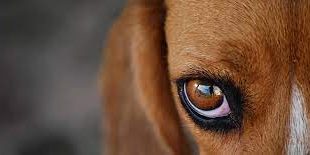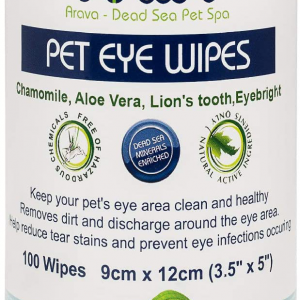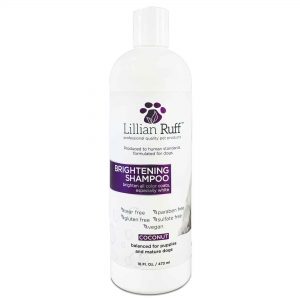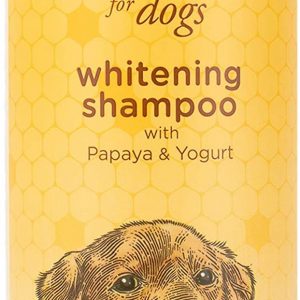Samoyeds are the living embodiment of beauty. That perfect double coat of white is one of the most beautiful things you’ll ever see. That is, of course, if nothing gets on it. Sure, dirt, grass, and urine are all possibilities, but there’s something else that can completely destroy that perfect coat: tear stains. Those dark streaks of dried-up tears are quite common and can be easily treated with a few tricks and remedies. If you you would like an effective ready-made solution, Tylosin Powder is the most effective solution out there.
-
Product on sale
 Arava Natural Pet Eye Wipes for Grown Dogs, Puppies and Cats- 100 Count- Free ShippingOriginal price was: $45.00.$42.00Current price is: $42.00.
Arava Natural Pet Eye Wipes for Grown Dogs, Puppies and Cats- 100 Count- Free ShippingOriginal price was: $45.00.$42.00Current price is: $42.00. -
Product on sale
 Lillian Ruff Coconut Scented Brightening & Whitening Shampoo for Dogs 16 ozOriginal price was: $29.00.$25.00Current price is: $25.00.
Lillian Ruff Coconut Scented Brightening & Whitening Shampoo for Dogs 16 ozOriginal price was: $29.00.$25.00Current price is: $25.00. -
Product on sale
 Burt’s Bees Natural Whitening Shampoo for Dogs 16 ozOriginal price was: $29.00.$26.00Current price is: $26.00.
Burt’s Bees Natural Whitening Shampoo for Dogs 16 ozOriginal price was: $29.00.$26.00Current price is: $26.00.
How to Remove Samoyed Tear Stains

Tear stains are more of an aesthetic issue than a health problem. That being said, your Samoyed would definitely appreciate a nice, clean coat. Here’s how to get rid of those pesky tear stains.
Whitening and Enzymatic Shampoos
Certain types of shampoos can be used to help get rid of tear stains. You have to follow a few steps first, however, because Samoyed fur can be a bit tricky to handle. First of all, get a pin brush and go through your pup’s coat to shake up all the dirt and debris. You might not be able to get to the undercoat without a long-tooth comb.
Next comes the shampoo part. You should opt for a whitening shampoo that is specially formulated for white dogs. If the shampoo’s purple, you’re most likely on the right track. Thoroughly wet your Samoyed from head to paw and then lather it with the shampoo. Make sure you don’t miss the tear stain areas. Give the shampoo about 2-3 minutes before rinsing it off.
Another type of shampoo you can use is an enzymatic shampoo. After wetting your Samoyed, apply the shampoo to the tear-stained areas only. Give it about 5 minutes before rinsing it off. Enzymatic shampoos should only be used after whitening your pup’s entire coat. If you feel the enzymatic shampoo isn’t cutting it, you can add any other homemade tear stain remover.
Make sure not to leave shampoos on your Samoyed for too long before rinsing. It can cause mild irritations. After that, you can dry or blow-dry your now shiny, glowing pup with a towel or a blow-dryer.
Apple Cider Vinegar
Tear stains are a result of excessive tearing which means the area around the eyes is full of moisture. This moisture becomes the perfect medium for bacterial, fungal, and all kinds of infections. This is where apple cider vinegar comes in. It’s the perfect solution for Samoyed tear stains. All you have to do is add a teaspoon of the vinegar to your pup’s drinking water daily. Here’s how it works.
You know how bacteria like moisture? Well, they may like moisture, but they hate acidity. Apple cider vinegar modifies your Samoyed’s pH levels making it a medium that is unfavorable for bacterial growth. This means there’s a smaller chance of an infection and therefore, less eye irritation and tear stains.
You can also apply the apple cider vinegar directly to the tear-stained area using a cotton pad. Make sure to stay away from the eyes because acids can be very irritating.
Vitamin C
Vitamin C, or ascorbic acid, is another great home remedy for tear stains. Much like apple cider vinegar, the secret lies in its acidity. Vitamin C helps create an acidic medium that is unsuitable for bacterial growth and therefore helps fight infections and tear stains. Just don’t use too much because it can sting your dog’s eyes if it gets inside. Apply a small amount of vitamin C to a damp, warm cloth and wipe away those pesky tear stains.
Milk of Magnesia
Milk of magnesia is another great homemade remedy you can make in seconds. You can use it alone or you can add equal parts of peroxide and then gradually add cornstarch to the mixture. You’ll know you’ve added enough cornstarch once you’ve reached a nice paste-like consistency. It shouldn’t be too watery or drip out of the bowl. Once you have your anti-tear stain mixture, apply it to the affected areas around your Samoyed’s eyes.
Make sure to massage it into the fur, reaching as much of the roots as possible. Next, let the mixture dry up for a few hours. After that, all you have to do is rinse it out with warm water or use a damp cloth. Make sure to dry your pup afterward because you don’t want any excessive moisture.
Diet Changes
When it comes to your Samoyed’s diet, there are a few small modifications you can make that’ll help prevent and even treat tear stains. First of all, you should avoid foods that are full of minerals and unnecessary carbohydrates. Always opt for high quality, nutrient-rich foods. This isn’t just for your pup’s health, but also if you want to avoid tear stains. Unhealthy food sources can often contain porphyrins, which are iron-based compounds that can exacerbate the tear stain problem.
Drinking Water
The kind of drinking water you put in your Samoyed’s bowl is just as important as the food it consumes in its diet. Tap water is the worst when it comes to white-fur pups. It contains large amounts of minerals that can lead to excessive tearing. Subsequently, all those tears dry up and leave behind iron-containing compounds that result in tear stains. To avoid this problem, you should stick to filtered or purified water. Both contain a small number of minerals and are less likely to cause tear stains.
Regular Grooming
This one’s more of a preventative measure rather than a cure. You might not realize it but the cause of your pup’s tear stains could be an excessive amount of hair around the eyes. The untrimmed hair can be quite irritating and can cause your Samoyed to tear up. Always groom your furry little friend whenever you get the chance.
Conclusion
Nothing compares to a clean, glowing double coat of a Samoyed. It’s like having a fluffy cloud trot down the street next to you, wagging its tail. The only thing that can mess up that perfect coat is tear stains. Unless, of course, you’re a smart dog owner who has a few tips and tricks up their sleeve, right?
 Total Pooch Dog Supplements, Tear Stain Removers, De-wormers, Tylosin for Dogs and other great products.
Total Pooch Dog Supplements, Tear Stain Removers, De-wormers, Tylosin for Dogs and other great products.






